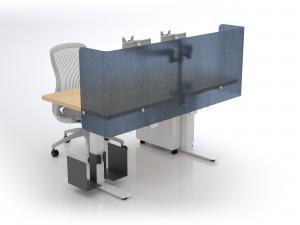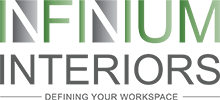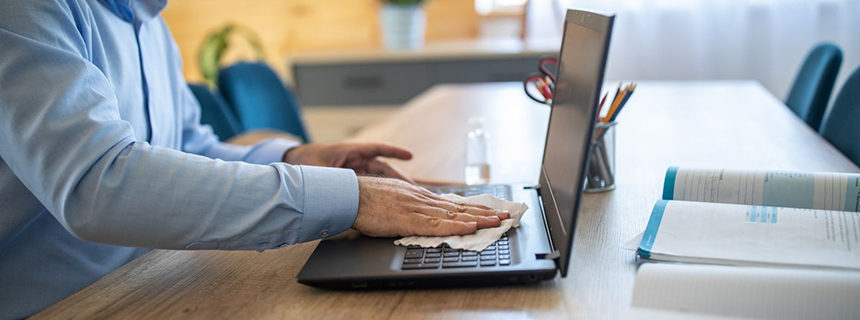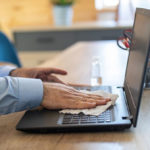The Difference Between Cleaning and Disinfecting
It is important to recognize that cleaning and disinfecting are not the same; therefore, the procedures are also different. Cleaning removes visible grime, oil, marks, and debris. Soap and water is effective at cleaning many surfaces but a clean surface is not necessarily germ-free. Disinfecting solutions reduce the risk of exposure to (invisible) bacteria and germs. Bleach and alcohol are commonly used to disinfect. Just as soap and water isn’t effective at combating germs, disinfectants don’t necessarily do a good job of cleaning. We suggest a two-step process of cleaning first (letting the surface dry) then disinfecting. For a list of approved disinfectants, visit the CDC website. (See the link below.)
Frequency
How often cleaning and disinfecting occurs depends on the amount of use and exposure to a particular surface. End of day cleaning and disinfecting might be your minimum threshold, with increased frequency — per transaction, hourly, or several times a day — as needed. (Maintaining a cleaning log is a great way to track the schedule.) Surfaces to pay attention include counters and desktops, door, drawer and cabinet handles, appliances, faucets, chair arms, light panels, telephone handsets, and keyboards.
Special Care for Fabric Leather and Wood
A soap and water solution will often clean wood and fabric. However, disinfecting solutions created for hardy laminate, glass, resin, and other non-porous surfaces may cause unsightly and permanent damage to delicate and natural materials. We recommend researching the best solution for your specific surface and first testing a solution in a hidden area or patch to check for potential damage.
Commercial-grade fabrics and meshes used for conference, training and task chairs are typically made to withstand thorough cleaning and disinfecting. However, this is not universal and depends on when and where the materials were manufactured. Again, if possible, check with the manufacturer for guidance and spot check for potential damage in a hidden area.
More information about this and related topics can be found at the CDC website.
3form recently announced a new product called, “Desk Wrap” made to fit standard-sized desks. Varia, the material used in the wraps, is a commercial-grade resin that can withstand rigorous cleaning and disinfecting. Desk Wraps come in different heights and dozens of colors, patterns and textures. For product information, email us at info@infinium-interiors.com.



